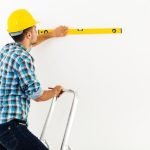Are you wondering, “Can I deduct home improvement on taxes?” Home improvement expenses can potentially be deducted from your taxes under certain conditions.
Understanding how this process works and what qualifies for a tax deduction is important for homeowners looking to maximize their financial benefits. In this article, we will explore the ins and outs of home improvement tax deductions, including what qualifies as home improvement, the documentation required, deduction limits, eligibility criteria, calculation and claiming methods, common mistakes to avoid, and additional tips for maximizing your deductions.
Homeowners often seek ways to reduce their tax burden, and one potential avenue for savings is through home improvement tax deductions. By understanding the rules and regulations surrounding these deductions, you can ensure that you are taking full advantage of the benefits available to you.
Throughout this article, we will provide comprehensive information on what qualifies as home improvement for tax deductions, the documentation required to support your claims, the limits on home improvement tax deductions, eligibility criteria for claiming deductions, calculation and claiming procedures, as well as common mistakes to avoid when seeking these deductions. Additionally, we will offer additional tips for maximizing your potential savings through home improvement tax deductions.
What Qualifies as Home Improvement for Tax Deductions
When it comes to qualifying for home improvement tax deductions, there are specific types of expenses that can be eligible for these deductions. It’s important to understand what qualifies as home improvement for tax deductions so that you can maximize your potential savings. Here are some examples of home improvements that may qualify for tax deductions:
- Energy-efficient upgrades: Installing energy-efficient windows, doors, roofing, insulation, HVAC systems, and solar panels can potentially qualify for tax deductions under the Residential Energy Efficient Property Credit.
- Medical accommodations: If you make modifications to your home to accommodate a medical condition or disability, such as adding wheelchair ramps or installing grab bars, these expenses may be eligible for tax deductions.
- Home office expenses: If you use a portion of your home exclusively for business purposes, you may be able to deduct certain home office expenses such as repairs, maintenance, and utilities.
It’s important to keep in mind that not all home improvements will qualify for tax deductions. Cosmetic upgrades such as painting, new flooring, or landscaping generally do not qualify unless they are part of a larger energy-efficient project. It’s always best to consult with a tax professional to determine which home improvement expenses can be deducted on your taxes.
In addition to understanding what qualifies as home improvement for tax deductions, it’s crucial to maintain proper documentation to support your claims. This includes keeping receipts, invoices, and any other relevant documents related to the home improvement projects. Without adequate documentation, you may not be able to substantiate your deduction claims and could potentially face issues during an IRS audit.
Documentation Required for Home Improvement Tax Deductions
When it comes to claiming home improvement tax deductions, proper documentation is key to ensure that you can maximize your tax benefits. The IRS requires specific documents to support your claim for home improvement tax deductions. This documentation will serve as evidence of the expenses you incurred and the legitimacy of your claims.
To successfully claim home improvement tax deductions, you will need to provide documents such as receipts, invoices, and contracts related to the improvements made on your home. These documents should clearly outline the costs incurred for materials, labor, and any other expenses associated with the home improvement project. Additionally, you will need to keep records of any permits obtained for the renovations or repairs.
The documentation required for home improvement tax deductions also includes proof of payment for the expenses incurred. This can be in the form of canceled checks, credit card statements, or bank statements showing the amount paid for materials and labor. Keeping organized records and maintaining a paper trail of all expenses can help substantiate your claim for home improvement tax deductions in case of an audit by the IRS.
| Required Documentation | Details |
|---|---|
| Receipts and Invoices | Covering materials, labor, and other expenses |
| Permits | Evidence of necessary permits obtained for renovations or repairs |
| Proof of Payment | Canceled checks, credit card statements, or bank statements |
Understanding the Home Improvement Tax Deduction Limits
As a homeowner, it’s important to understand the limitations and restrictions when it comes to deducting home improvement expenses on your taxes. While home improvements can add value to your property, not all expenses are eligible for tax deductions. Understanding the home improvement tax deduction limits can help you make the most of potential tax benefits while avoiding any pitfalls.
When it comes to home improvement tax deductions, only specific types of expenses qualify. These include costs incurred for making your home more energy-efficient, medical-related improvements for accessibility and safety reasons, or expenses related to capital improvements that increase the value of your property. It’s crucial to keep accurate records and documentation of these expenses in order to claim them on your taxes.
It’s also important to note that there are limits on how much you can deduct for home improvement expenses. In general, you cannot deduct the full amount of your home improvement costs in the year they were incurred. Instead, these expenses may be depreciated over time. Understanding these limits will help you accurately calculate and claim your home improvement tax deductions without running into any issues with the IRS.
| Expense Type | Deduction Limit |
|---|---|
| Energy-Efficient Improvements | Varies based on specific improvement |
| Medical-Related Improvements | May be fully deductible if they meet certain criteria |
| Capital Improvements | Depreciation over time based on IRS guidelines |
Eligibility Criteria for Claiming Home Improvement Tax Deductions
Home Ownership
In order to claim home improvement tax deductions, you must be the owner of the property where the improvements were made. If you are a renter or do not own the property, you are not eligible to claim these deductions. Additionally, if the improvements were made on a second home or rental property, there may be different eligibility criteria and limitations.
Primary Use of the Property
The IRS requires that the home improvement be for the primary use of the property. This means that the improvements should directly benefit the main living areas of the home. For example, adding a new kitchen or renovating a bathroom would likely qualify, while building a new outdoor patio might not unless it is directly connected to the main living space.
Qualifying Expenses
Not all home improvement expenses are eligible for tax deductions. Generally, only expenses related to capital improvements that increase the value of your home are eligible. Routine repairs and maintenance do not typically qualify for deductions. It’s important to keep detailed records and receipts of all expenses related to home improvements in order to accurately calculate and claim any potential deductions.
By meeting these eligibility criteria and keeping detailed documentation of your home improvement expenses, you can ensure that you are ready to make use of potential tax deductions when it comes time to file your taxes. Consulting with a tax professional can also help provide guidance on what qualifies for deductions and how to maximize your potential savings.
How to Calculate and Claim Home Improvement Tax Deductions
When it comes to calculating and claiming home improvement tax deductions, there are certain steps you need to follow in order to ensure that you are maximizing your tax benefits. The first step is to gather all the necessary documentation related to your home improvement projects. This includes invoices, receipts, and any other supporting documents that demonstrate the cost of the improvements.
Once you have gathered all the necessary documentation, you can then calculate the amount of your potential tax deduction. Keep in mind that not all home improvements are eligible for tax deductions, so it’s important to understand what qualifies. Generally, improvements that increase the value of your home or prolong its life can be considered for tax deductions.
When it comes time to claim your home improvement tax deductions, you will need to itemize your deductions on Schedule A of Form 1040 when filing your taxes. Be sure to fill out the appropriate sections and provide accurate information based on the documentation you have gathered. It’s always a good idea to consult with a tax professional if you have any questions or concerns about claiming these deductions.
By following these steps and accurately calculating and claiming your home improvement tax deductions, you can potentially benefit from valuable savings on your annual taxes. With proper documentation and understanding of eligible improvements, homeowners
Common Mistakes to Avoid When Claiming Home Improvement Tax Deductions
When it comes to claiming home improvement tax deductions, there are several common mistakes that taxpayers should be aware of in order to ensure they are maximizing their potential savings. Here are some key pitfalls to avoid when claiming home improvement tax deductions:
1. Failing to keep proper documentation: One of the most common mistakes taxpayers make when claiming home improvement tax deductions is failing to keep adequate documentation of their expenses. Without proper records, it can be challenging to support your claims in the event of an audit. Be sure to keep receipts, invoices, and any other relevant paperwork related to your home improvement projects.
2. Claiming ineligible expenses: Not all home improvement expenses qualify for tax deductions. It’s essential to understand what expenditures can and cannot be claimed on your taxes. For example, cosmetic enhancements such as landscaping or pool installation typically do not qualify for tax deductions, while energy-efficient upgrades and structural improvements often do.
3. Overestimating the value of improvements: Another common mistake is overestimating the value of your home improvements when determining the amount you can deduct on your taxes. To avoid potential issues with the IRS, it’s crucial to accurately calculate the eligible deduction based on the actual costs incurred for qualified home improvement projects.
By being mindful of these common mistakes and following proper guidelines for documenting and claiming home improvement tax deductions, homeowners can potentially save a significant amount of money come tax time. It’s important to consult with a tax professional or utilize reputable resources to ensure that you are taking full advantage of all available deductions within the confines of the law.
Additional Tips for Maximizing Home Improvement Tax Deductions
When it comes to maximizing your home improvement tax deductions, there are a few additional tips that can help you make the most of this benefit. By following these tips, you can ensure that you are taking full advantage of the tax deductions available for your home improvement projects.
Keep Detailed Records
One important tip for maximizing your home improvement tax deductions is to keep detailed records of all expenses related to your home improvement projects. This includes receipts for materials, labor costs, and any other expenses incurred during the renovation or upgrade. Having thorough documentation will not only support your deduction claims but also provide a clear record in case of an IRS audit.
Consider Energy-Efficient Upgrades
Another way to maximize your home improvement tax deductions is to focus on energy-efficient upgrades. Certain energy-efficient improvements such as installing solar panels, upgrading insulation, or replacing windows and doors with energy-efficient models
Consult With a Tax Professional
It’s always advisable to consult with a qualified tax professional when attempting to maximize your home improvement tax deductions. They
Conclusion
In conclusion, taking advantage of home improvement tax deductions can provide significant financial benefits for homeowners. By understanding what qualifies as a deductible home improvement and the documentation required, individuals can maximize their tax savings while investing in the upkeep and enhancement of their property.
It is important to remember that there are limits to the amount that can be deducted for home improvements, so it is crucial to stay informed about these regulations in order to accurately calculate and claim deductions. Additionally, meeting the eligibility criteria for claiming home improvement tax deductions is essential, and homeowners should ensure that they meet all the necessary requirements before attempting to make a claim.
Furthermore, avoiding common mistakes when claiming home improvement tax deductions and following additional tips for maximizing these deductions can help homeowners make the most out of their efforts. With careful planning, accurate record-keeping, and thorough knowledge of the laws surrounding these deductions, individuals can potentially save a significant amount on their taxes while also improving their homes. Overall, pursuing home improvement tax deductions can be a valuable way to financially benefit from investments in one’s property.
Frequently Asked Questions
Can You Use Home Improvements as a Tax Write Off?
Yes, home improvements can be used as a tax write-off under certain circumstances. For example, if the improvements are made for medical purposes or to make a home more energy-efficient, they may be eligible for tax deductions.
What Is Tax Deductible for Homeowners?
Tax deductible expenses for homeowners typically include mortgage interest, property taxes, and any points paid when obtaining the mortgage. Additionally, some home improvements that increase the value of the property or make it more energy-efficient may also qualify for tax deductions.
Is Home Insurance Tax Deductible?
Generally, standard home insurance premiums are not tax deductible for most homeowners. However, if a portion of the home is used for business purposes or rental income, then a percentage of the insurance premiums related to that specific area may be deductible as a business expense.

I’m thrilled to have you here as a part of the Remodeling Top community. This is where my journey as an architect and remodeling enthusiast intersects with your passion for transforming houses into dream homes.





